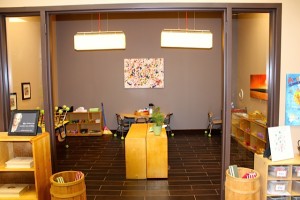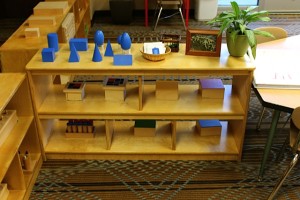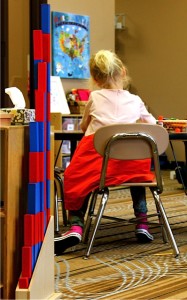Welcome to our new Children’s House classroom at Wake Forest Montessori!!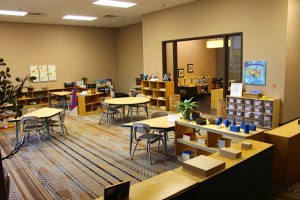
Practical Life is the point of entry for all children to life in the Children’s House classroom. Children learn things such as how to behave appropriately in a community, how to coordinate big body and fine motor movement, how to care for oneself, and how to care for various objects in the environment. Children also learn how to prepare food for snack and learn how to eat a well-balanced meal.
In the Sensorial Area, activities are based on the five senses that we perceive: touch, visual, auditory, smelling, and tasting. Children are able to explore and interact with objects that isolate one sense and its quality. In turn, they are able to classify and categorize impressions of the world around them. Later work combines qualities in a more advanced format thus stimulating the intellect of older children and preparing for higher mathematics such as geometry. Sensorial helps build cognitive skills and is crucial to the development of long-term memory.
Spoken language forms the foundation for all other language activities in the primary classroom. Children are provided with a rich vocabulary experience through songs, poems, stories, conversation, and objects in the environment. As vocabulary increases, the child’s confidence is gained and s/he delights in being able to effectively communicate with others. The child is invited to break down and reconstruct the individual sounds (phonemes) of words, and it is from this that an interest in letters and writing develops. Children will often spontaneously read their first word in the classroom, and love the opportunity to expand their knowledge.
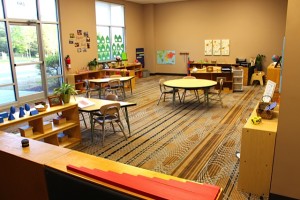
All of the child’s experiences in the Practical Life, Sensorial, and Language areas culminate to form the foundation for readiness and interest in Mathematics. Children are introduced to the Mathematics Area once they are able to make one to one correspondence with everyday objects and follow a logical sequence of activity. Through Mathematics, children work with concrete materials that help to develop abstract reasoning skills. The four mathematical operations and the decimal system are introduced in a way that is both fun and explorative.

